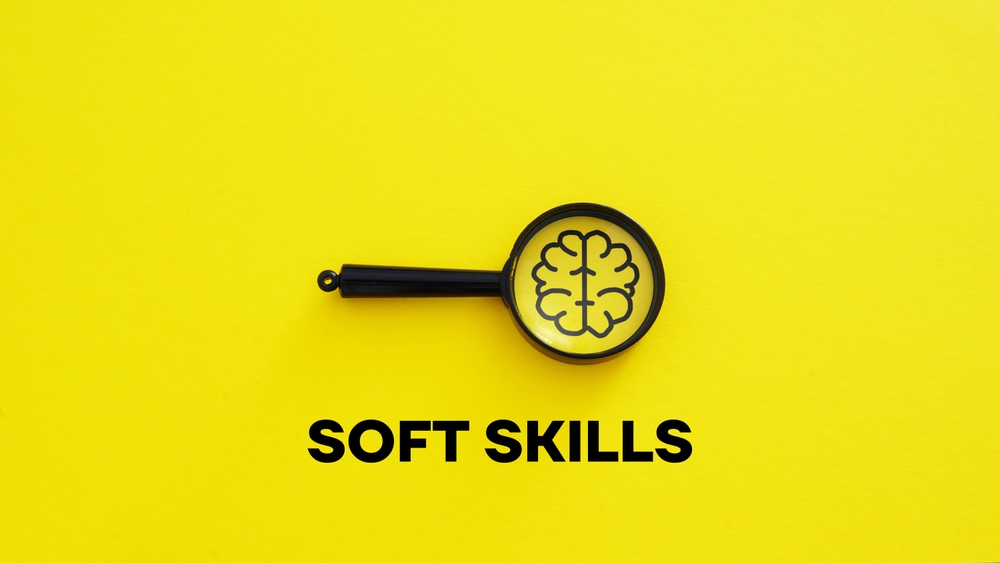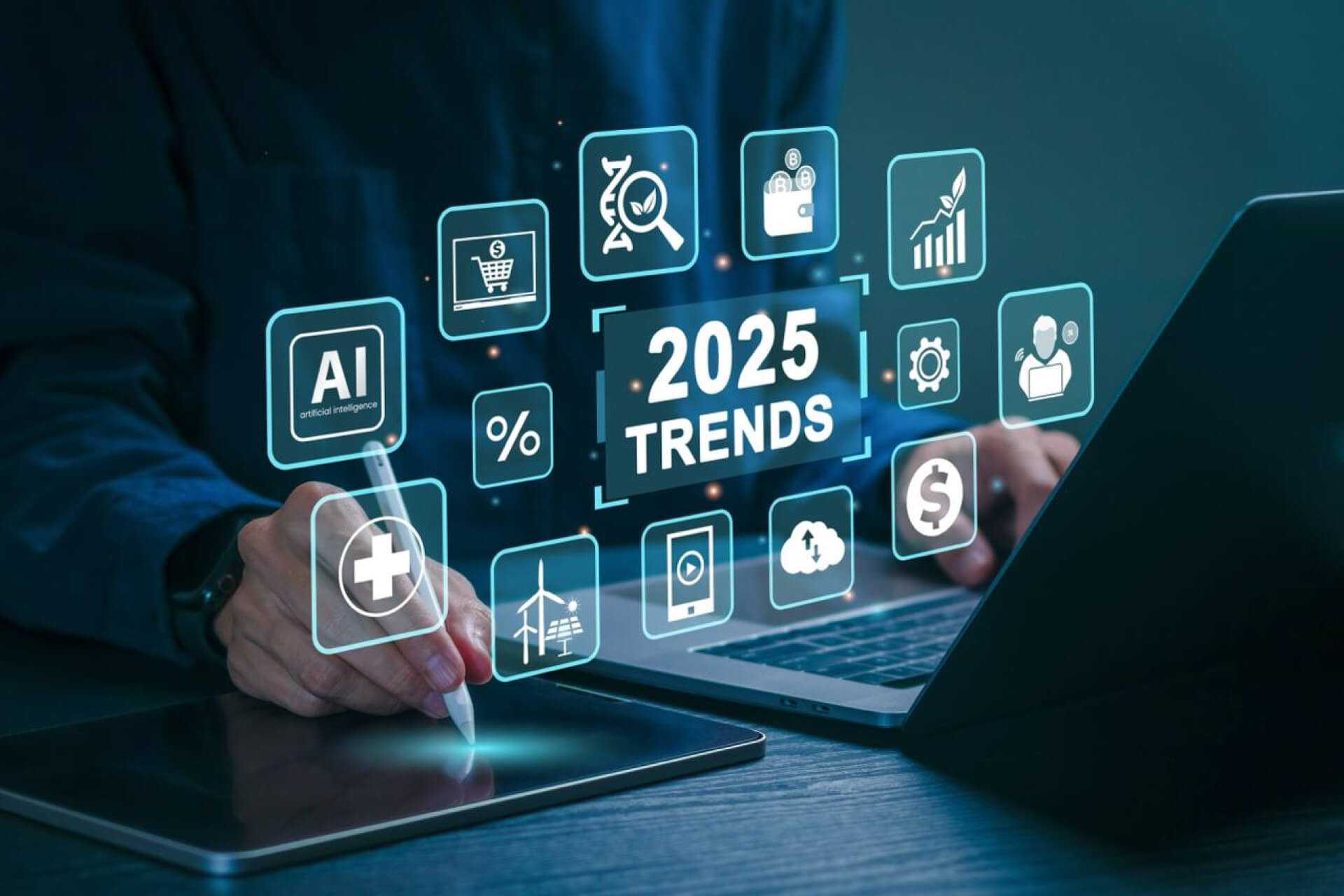In 2025, resumes have to meet the needs of modern recruiters. But they must be visually appealing, too. In this competitive job market, hiring managers rely on advanced tools to choose the perfect candidates for interviews. Thanks to AI-driven screening processes and Applicant Tracking Systems, what worked in the past no longer works. So, forget about generic templates and cliché objectives. The trends include digital resumes, ATS-friendly formats, and hybrid designs
As a job seeker in 2025, it’s important to stay updated on resume trends. We’ll help you with that. Thanks to our guidelines, you’ll see what practices can make the difference between landing an interview and being overlooked.
What You Need to Know about Resumes in 2025
The most important resume trends from 2024 are still relevant. But in 2025, they will continue evolving to address new hiring challenges. As a job applicant, you should mainly focus on ATS-friendly formatting and measurable achievements. But the latest trends take those elements a step further.
-
Tailoring resumes to specific job descriptions has been a huge trend for years now. But today, we’re seeing an even greater need for personalization. You should hyper-personalize your resume to fit not only the job role but the company’s values as well. Somewhere along the way, you’ll also include industry-specific keywords. The higher need for personalization leads more candidates to resume writing services. Professional writers are aware of the trends, so they can help you meet the expectations of hiring managers.
-
The hybrid resume format is on the rise. It blends chronological and functional styles. With that, it’s perfect for showing versatile skills and achievements without losing the logical flow.
-
Digital portfolios are getting more popular, too. An increasing number of hiring managers require applicants to show actual work samples within their resumes.
-
Stay minimalistic! The trends impose subtle creativity, though. You can do that with smart use of typography, color schemes, and graphics. However, the design is still supposed to be minimalistic.
-
The trends shift towards soft skills and adaptability. Your technical skills are easy to review. Hiring managers want to see where you stand with emotional intelligence, adaptability, and cross-functional collaboration. Make sure your resume reflects such qualities! You can express them through a good summary and real examples.
How AI and ATS Impact Resume Trends 2025
Technology is the main trend. AI-powered Applicant Tracking Systems and data-driven recruitment platforms redefine how job applicants write resumes. Now, you’re not worried just about human reviewers. Your applicant must be appealing to the tools they use, too.
-
In 2025, your resume should balance functionality and aesthetics. ATS-friendly formatting is still essential. You should include industry-specific keywords, optimized sections, and simple layouts. That’s how you’ll improve your chances of getting through the first stage of the hiring process.
-
The requirement for digital resumes is on the rise. If you decide to get a professional resume, consider including a QR code, online portfolio, and LinkedIn link. Recruiters expect to easily access work samples, certifications, and possibly video instructions.
-
There’s been a notable rise of AI, sustainability initiatives, and green economy trends across all industries. As a job candidate, you’ll need to tailor your resume to those trends. It’s best to pursue relevant certifications on time. That will give you a chance to show relevant technical skills and project experience in your resume.
What’s Hot for Resumes in 2025

Now that we know what the general trends are, let’s get into detail! We’ll
start with the pieces you need to include in your resume so it will be ready
to get you an interview.
Hyper-Personalization
We’re not talking about simple personalization, which requires you to include some keywords from the job description. No. We’re talking about hyper-customizing your resume whenever you send it for a new application. Remember this: every recruiter or hiring manager only cares about their job opening. They don’t care about the effort it takes you to customize your resume every single time you apply for a position. They expect you to genuinely understand this specific role and show why you’re applying for it.
Reasons why hyper-personalization matters
- Only a specific resume will help you stand out. It’s a crowded job market out there, and it doesn’t matter what industry you’re a part of. The applicant pools are growing larger. You will grab the employer’s attention only if you directly address the job’s demands.
- When you personalize your resume, you’ll include industry-specific keywords and phrases relevant to the role. With that, you’re more likely to get through the Applicant Tracking System. It’s powered by AI, which targets those phrases.
- You can show you’re a good cultural fit only if you personalize your resume. It must show you understand the company’s mission and values. This is the point when customization is important for human readers. Once your resume passes the first stage (ATS), the last thing you want is for the recruiter to think it’s generic.
- A hyper-customized resume will prove your adaptability. You need to monitor the industry’s trends and align your skills accordingly.
How to hyper-personalize your resume
No, you won’t have to write it from scratch. You can use a resume you already have and take it a step further. Here’s how:
1️⃣ Identify the key skills, qualifications, and action verbs from the job description. Write them down in a list. Then, find a way to include them in your resume. This will boost its ATS compatibility. But you have to do it most naturally, since people will read that resume, too.
2️⃣ Write a master resume. It should include all your skills, experience, and achievements. Don’t worry if it’s longer than the one-page standard. You can use that grand resume for each job application, but you’ll hyper-personalize it first. You’ll choose the most relevant details every time.
3️⃣ Always use quantifiable results that are specific to the job role. Like this: “Increased team productivity by 20% through optimized workflow processes,” if you’re applying for a management position.
4️⃣ Focus on the summary statement. Forget all about the old statements you’ve written in previous resumes. For this part, start from scratch and directly address the employer’s needs. Here’s a good example: “Marketing specialist with 5+ years of experience in analyzing big data and creating innovative campaigns for the e-commerce sector. Achieved a 25% increase in customer retention rates over six months for a previous employer.”
5️⃣ Always adapt the Skills section so you can include the ones that are directly relevant to the role. Aim for a mix of hard and soft skills that would meet the hiring manager’s expectations.
6️⃣ To customize your resume in the best way possible, visit the company’s website. It’s the right place to see what its goals and culture are like. You can also go through its social media profiles and recent press releases. Be subtle when you reflect this knowledge in the resume. You can do it by including experiences that fit with their values.
Visually Appealing Design
Remember when we told you to focus on content and keep the design plain? That used to be the standard way to write a resume that doesn’t confuse ATSs. In 2025, it’s time to change that. Job applicants should still stick to a clean and simplistic design. But you can make your resume more engaging by using some creative elements.
Why appealing design matters
- When your layout is organized with clear sections, the hiring manager can easily find the details they need.
- Enhancing the visual appeal of your resume with subtle design elements makes a good impression. Your resume will stand out. It will also convey professionalism and attention to detail. It’s a great way to set a positive tone from the get-go.
- You can use thoughtful design elements to create your personal brand. If you aim for a role in a creative field, that’s especially important.
How to make your resume visually appealing
1️⃣ Don’t be afraid of color. You can use different shades to emphasize headers, contact information, and skills. When using colors, pay attention to the way they look against the background. Readability is crucial!
2️⃣ Don’t go overboard, though! Your resume needs a professional tone, so use muted tones like navy and gray for corporate roles. If you’re in a creative industry, bolder color choices may do you well.
3️⃣ Choose simple icons for a visual appeal. You can use them to represent your contact information, skills, and certifications. The icons must be subtle. They should fit in the overall aesthetic of your resume.
4️⃣ The lines should be clean. You need a good dose of white space and a clear hierarchy of information. Such a layout helps you to avoid clutter. Avoid using graphics and embellishments.
5️⃣ When it comes to fonts, it’s not the time to get creative. Stick with easy-to-read but modern fonts like Calibri, Arial, and Garamond. You can play with boldness and size to create a visual hierarchy between the sections.
6️⃣ When submitting your resume digitally, include interactive elements. These can be hyperlinks to your portfolio, LinkedIn profile, and personal website.
7️⃣ Your choice of design should meet the standards of the specific industry. For corporate and federal resume writing, stick to neutral colors and classic fonts. Excessive design elements are not needed here; clarity and professionalism are essential. Creative industries expect a bit more experimentation. Use a splash of color and visual elements like skill charts, infographics, or project highlights. Tech roles, on the other hand, go well with clean designs. Progress bars are great for listing coding skills.
AI-Friendly Formatting
Your goal is to optimize the resume for Applicant Tracking Systems, but keep it readable for hiring managers at the same time. The application should go through the AI system, but be exceptional when it reaches the human reader.
How to achieve AI-friendly formatting
1️⃣ Hierarchy is your friend. Create distinct sections for contact information, summary, skills, work experience, and education.
2️⃣ The headings should be standard. Don’t try to make them creative since ATS algorithms rely on common terms to identify and categorize data.
3️⃣ Visuals may confuse ATS systems, so keep them subtle. Graphics and unconventional formatting are a no-no! But you can still get a bit creative within the limits that AI algorithms impose.
4️⃣ It’s best to keep the font size between 10 and 12 points so that it will be suitable for both ATSs and human readers.
5️⃣ The file type matters, too. Unless specified otherwise, always submit your resumes as PDFs. That file will preserve your formatting and is widely accepted by ATSs.
6️⃣ When you think about writing for Applicant Tracking Systems, always focus on keywords. These systems scan for terms that match the job description. That’s where you’ll start from: the job description. Extract relevant keywords from the posting. Think about the skills, qualifications, and action verbs your resume should include.
7️⃣ Don’t forget to include industry-specific terms. That’s how you’ll align your application with the standards of the industry. If you’re applying for a tech role, for example, you can include terms like Python programming or Agile methodology.
8️⃣ Keyword stuffing is no good! It makes your resume look generic. Even if it passes through the ATS, it won’t impress a hiring manager. Here’s a good example of including keywords naturally: “Led Agile teams to deliver software projects, achieving a faster delivery time by 20%.”
Soft Skills

If you go through resume writing trends from previous years, you’ll notice that hard skills were appreciated the most. Yes, you still need to list your technical expertise. It shows you are a good fit for the job. However, soft skills are increasingly recognized as important for a successful hire. Recruiters pay attention to the candidate’s emotional intelligence, adaptability, and collaboration mindset. The person they hire has to contribute to a harmonious and productive environment.
Top soft skills to list on your resume in 2025
- Emotional intelligence — Your ability to understand and manage emotions and establish effective interpersonal relationships.
- Adaptability — Your ability to work in a fast-changing setting.
- Collaboration — A team-centered approach that improves the organization’s performance.
- Problem-solving — Analytical thinking and ability to handle challenges.
- Leadership — The way you inspire others to be better at their job, even if you don’t have formal authority.
- Resilience — Your ability to perform under pressure.
It would be so easy to list these important skills in your resume. But a simple list of generic terms doesn’t go to your advantage. Your resume should demonstrate (not list!) these skills. Don’t worry; we have some tips you can follow.
How to demonstrate soft skills on your resume
1️⃣ Instead of listing these skills in a separate section, you should infuse them into your professional achievements. Like this: “Collaborated with a cross-departmental team of 10 to improve workplace system efficiency.”
2️⃣ Always use action verbs, such as led, coordinated, and resolved. They demonstrate how you use your soft skills in action. If you add measurable outcomes, you’ll achieve an even better result with your resume. Here’s an example of something good to write: “Mentored a team of 5 junior analysts. The project resulted in a 20% improvement in project completion rates.”
3️⃣ Mention the most relevant soft skills in the summary. This section shouldn’t be just about your qualifications. It should show you that you are the right hire and that soft skills are crucial in the way you fit into the organization.
Hybrid Resume Format
The hybrid resume uses the best elements of chronological and functional resume formats. Thanks to this approach, you can highlight both your work history and relevant skills. It’s a good way to present a non-linear career path and versatile qualifications.
Features of a hybrid resume
- This format has a Skills section, which shows your key qualifications and areas of expertise. It comes at the top of the resume. This format is perfect for job seekers who want to immediately showcase their skills rather than experience.
- The hybrid resume lists your work history in reverse chronological order. This is the part that makes it similar to the chronological resume format. It keeps a clear record of your employment history, and it includes achievements and responsibilities for specific roles.
When to use a hybrid resume
This format is perfect for candidates with versatile skill sets. If you have experience across multiple industries, you can show your depth by including skills in your professional achievements.
Hybrid resumes also work for seasoned professionals. Although they have extensive experience, listing the skills first increases keyword visibility. The reverse chronological order in the Experience section will prevent older roles from taking up excessive space.
In these situations, a hybrid resume is the right way to go:
-
Employment gaps
-
Freelancing or consulting
Digital Resumes
We’re moving towards digital platforms at a faster pace than ever before. Job candidates have been sending digital resumes to employers for a long time. But today, the trends go beyond traditional PDF attachments. You get a chance to show your expertise in a dynamic and interactive way.
What works as a digital resume
- Your LinkedIn profile can work as an extension to your resume. LinkedIn is practically an online resume that helps you build a personal brand, network with industry pros, and get more visibility on the job market. It features multimedia uploads, articles, and endorsements. Recruiters love the platform, so it’s about time for you to update that profile.
- A personal website also works. It gives you full control over design and content. It gives you a chance to reflect your personality and style. It’s much better than a static resume because it can feature blogs, case studies, testimonials, and more. A good website can also be discovered by recruiters who search for the perfect candidates online.
- You can also use a digital portfolio as a resume. It gives you space to display your expertise through work samples, such as design mockups, writing pieces, coding projects, and marketing campaigns.
- QR codes are a great addition to resumes. They give hiring managers quick access to additional information. You can use them to link to your digital portfolio, LinkedIn profile, or personal website.
Sustainability
Sustainability is a prominent focus across industries. It’s extending to resume practices, so think about following eco-friendly principles when submitting a resume. Here’s how to do that:
1️⃣ Send a digital resume instead of a paper one. There’s no need to waste paper, ink, and envelopes.
2️⃣ Show you care about sustainability by mentioning green initiatives in some of your previous roles. Here’s an example: “Implemented a paperless documentation system, reducing office waste by 50%.”
What’s Not Hot for Resumes in 2025

Now that we know what trends are good to follow in 2025, let’s talk about the trends we left behind.
❌ Flashy design
We told you to get a bit creative, but going overboard is still a mistake. Stay away from excessive colors, graphics, and fonts. They distract the reader from the content, but they also make the resume hard for ATSs to process.
❌ Generic resume summary
It’s OK to rely on a resume template. It’s OK to find some examples online just to get an idea of how to write your own resume objective. But your content must be unique. It should be brief and targeted to the specific job opening. If you get stuck at that point, it’s wise to hire a professional resume writer to write the objective for you.
❌ Long resumes
If your resume is longer than two pages, it won’t work. Lengthy resumes distract recruiters. They spent mere seconds scanning your application to decide if you’re worthy of consideration. Being brief shows that you can make priorities and communicate effectively.
It’s best to avoid phrases like detail-oriented, team player, and hard-working. They’ve been used so much in all applicants’ resumes that they now seem generic. You can use them only if you provide context or proof. Quantifiable results change everything.
Are You Ready?
Staying ahead of other job candidates is important. A modern resume should be hyper-personalized, visually appealing, and AI-friendly. It should include soft skills that prove you fit into the company’s culture. The hybrid format, digital resumes, and sustainable practices are other essential trends to follow.
Now that you know what type of resume works in 2025, you can start creating it. If you get stuck at any point, just ask us for help
